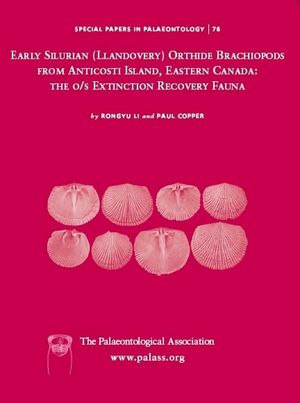Reg. Charity No. 1168330

Shell-rich Llandovery strata of the Anticosti ramp to shelf tropical carbonate sequence yielded 17 orthide genera, to which are attributed 23 species: 13 of these are new species, one a new subspecies and one a new genus, Jupiterella, type J. eumorpha sp. nov. The other new species/ subspecies are Dalejina junonis, ?Diceromyonia ciona, Flabellitesia adaia, Glyptorthis marilara, Heterorthina cybele, Isorthis (Ovalella) natiscotekia, Levenea mera, L. rica, Mendacella udauberis, ?Pionodema hypermeca, Platystrophia hongueda and Platystrophia regularis aporegularis. Anticosti orthide species previously described in pioneering papers dating between 1857 and 1928 are revised, with 15 species placed in synonymy or regarded as nomina nuda, and others illustrated for the first time. The material includes some 9200 shells, selected from a database that includes more than 1600 localities, greatly expanding the old locality register and enabling the accurate placement of known and new species in a stratigraphic, evolutionary, as well as type locality framework. During the Llandovery, orthides spanned the common Telychian benthic assemblages from the Eocoelia through Pentamerus, Stricklandia and Clorinda increasingly deeper settings, though such communities were not organized on Anticosti until the late Aeronian. In the carbonate shelf succession of the Jupiter Formation, there are no linear brachiopod community or assemblage belts truly identifying their relative water depth occurrences: only patchy distributions are typical. The discovery of a number of orthides in the Early Silurian of Anticosti, which ostensibly had disappeared at the end of the Ordovician, suggests that the Ordovician ⁄ Silurian mass extinction severity for brachiopods was more complex, and probably less severe, than usually portrayed. The delayed full recovery of orthide diversity did not take place until the middle Jupiter Formation, in late Aeronian through Telychian time, matching the c. 3–4-million-year delay seen in other brachiopod and coral species, as well as reefs.